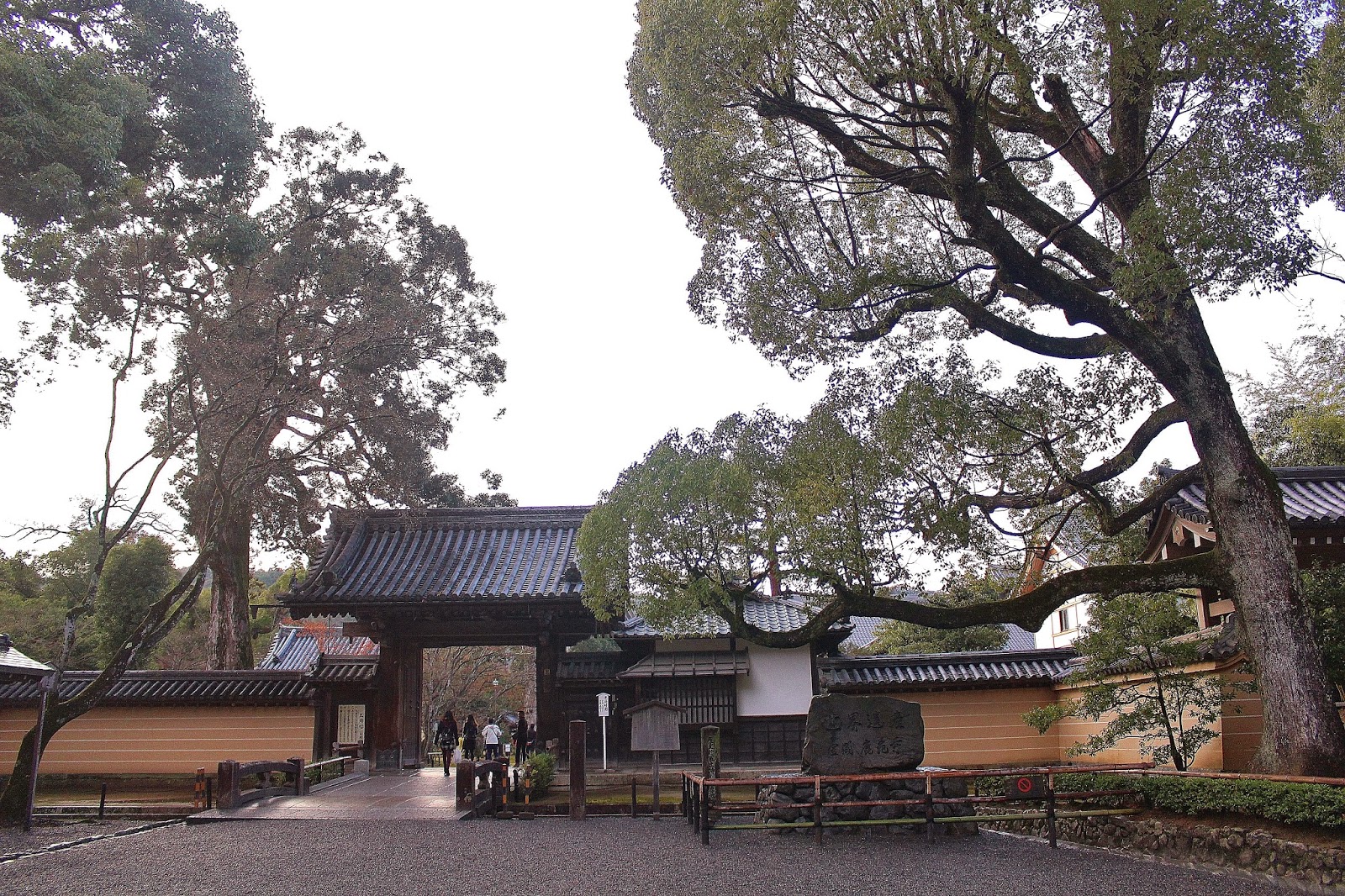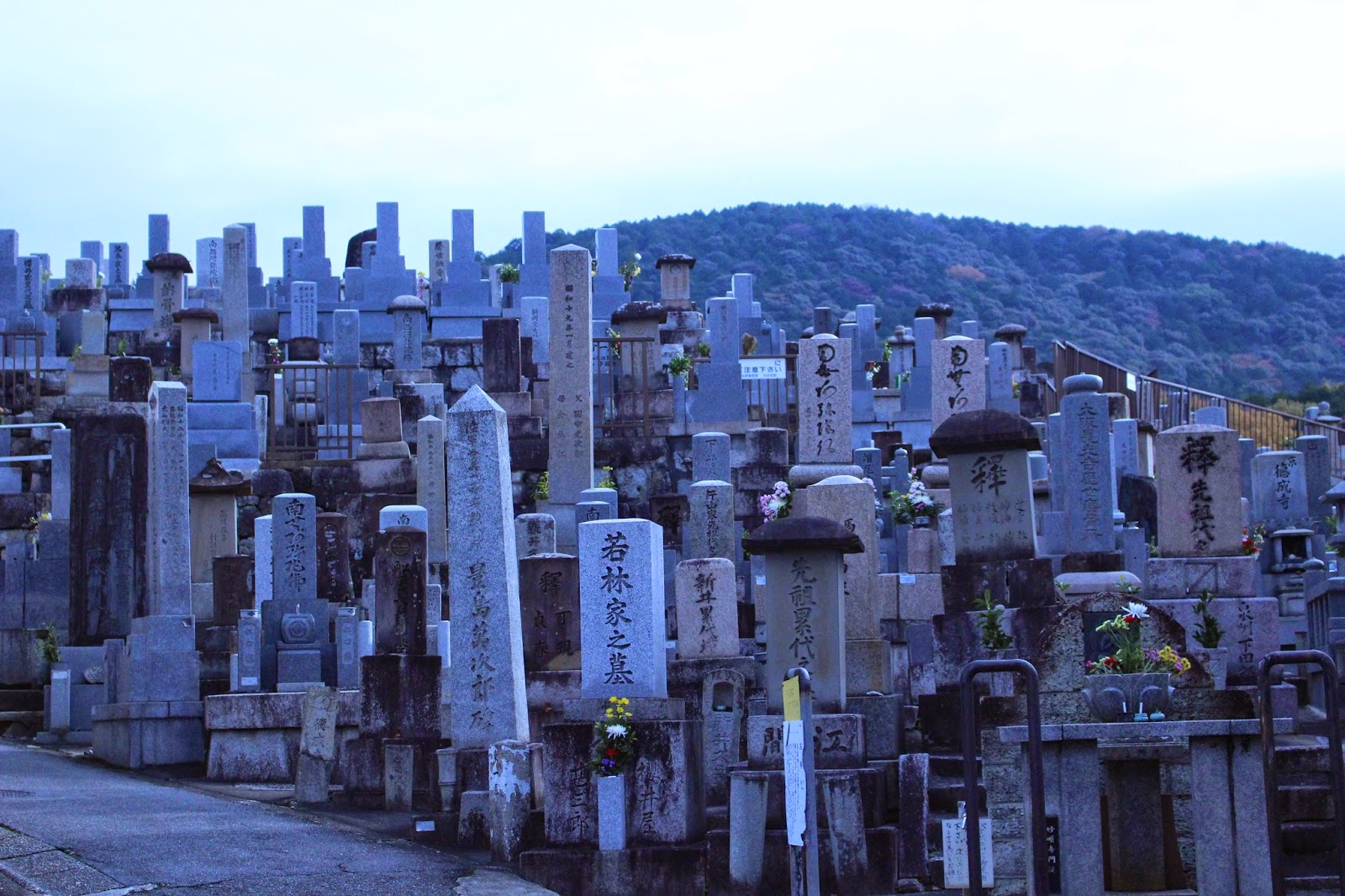We woke up to a wet, cold morning in Kyoto, Japan. We had arrived the night before in Osaka from Manila and not long after, promptly jumped on the Japanese Rail (JR) train to Kyoto, where we will be spending the next two evenings sleeping on traditional futon mattresses laid on a tatami mat floor. It had started raining as soon as we dropped off our bags about 10PM in search of a hot bowl of ramen which we judiciously found a few blocks from our guesthouse. We would survive the soggy weather, thanks in part to an umbrella purchased from a 7-11 where we (joyously) found that the American dollar was stronger and the Japanese yen, weaker.
I had no idea what to expect in Japan. Our combined experience in travel though has prepared us that no matter what, wherever we find ourselves, we always survive and have a memorable time. So why worry?
My initial observations of Japan lack profoundness and sophistication, to be honest. They were pretty rudimentary from:
1. Wow. They really don't speak any English around here. Maybe only 2%.
2. And. Wow, they have the best toilets in the world. Think very clean, heated seats, standard built-in bidets with adjustable pressure, noise-concealers. At the Intercon in Osaka, they had those that are like soldiers that suddenly stand in attention and salute when you walk into the cubicle (where the doors are actual, real doors, mind you).
3. And. Wow, this must be the cleanest country I have ever set foot on. The train stations were brimming with people, even late at night, and yet, there would be no litter, pee smell or graffiti typically found in train stations everywhere else. It's utopia for germophobes!
We had no time to spare so rain or shine, we set off with our umbrella, our guidebook and not much else to explore Kyoto. We've never traveled to any country where our itinerary comprised mostly of hopping from one temple to the next. But in Kyoto, there are seventeen sites that belong to the UNESCO World Heritage List, most of which are temples. If we were to try to delve as much as we can into Japan's rich heritage and culture, we might as well visit a few temples.
The temples we visited were old, but they were all working temples to this day. It wouldn't be unusual to observe Japanese pilgrims perform their religious rituals - tossing a coin into a tray, uttering a silent prayer, then subsequently ringing a bell a hanging from a ceiling, and then clapping twice. Prayer cards and wishes written on paper or drawn on small planks would be tied to beams fronting the temples. Incense and candles would be burning outside.
Fushimi Inari
Fushimi Inari's over a thousand orange gates is one of Kyoto's well known icons. If you've remember watching Memoirs of a Geisha, this is where Sayuri ran off to the first time she met the Chairman as a young girl. It is located in the southern part of Kyoto, on a hillside, and is one of the most important Shinto temples in Kyoto. The gates themselves are "purchased" by companies and the markings behind each one would say who the "donation" came from.
As previously mentioned, the weather was pretty wet and dismal, and as much as we wanted to trek to the top of the hill, we had to throw the (wet) towel in.
 The pedestrian streets leading to Fushimi Inari were very quaint and were lined with all sorts of Japanese cafes and shops, my favorite of which was a place that sold only chopsticks which they will engrave your names for your for free! We were also on the hunt for Vermillion, a revered neighborhood café, but we happened to be there on a Thursday, the only day that place was closed.
The pedestrian streets leading to Fushimi Inari were very quaint and were lined with all sorts of Japanese cafes and shops, my favorite of which was a place that sold only chopsticks which they will engrave your names for your for free! We were also on the hunt for Vermillion, a revered neighborhood café, but we happened to be there on a Thursday, the only day that place was closed.
Kinkaku-ji was initially intended to be a villa, but subsequently converted into a Zen temple. If it looks like this pavilion is gleaming, it is because it is. It is cloaked in gold. The rain had stopped and we arrived just as the sun was setting, which accentuated the temple's golden glow. It was heart-stopping to see in real life, especially since there were no other competing structures around it. I especially love the lush mountains behind it.
There is a path that goes around the temple and behind with beautiful surroundings, some statues, and before the exit, a temple. We noticed a lot of students on a field trip, some pilgrims and tourists, but also had a Karate Kid sighting!
We wandered all over Gion at dark and ran into a couple of landmarks, which during this time of the year, were all lit up. We had no intention of sightseeing further after dinner, but it was difficult to peer away from these mysterious temples. We didn't walk inside the Kodai-ji grounds, but I guess within is a garden created by one of Japan's most famous garden designers. At one of its entrances are steps flanked by pretty trees on either side and a bamboo grove on one side.
Otani Hombyo
This is technically not a temple, but a mausoleum dedicated to Shinran Shonin, founder of one of the Buddhist traditions called Jodo Shinshu. We stumbled upon it trying to find Kiyomizu-dera. We were urged by a security guard to come in and explore, so why not?Kiyomizu-dera
This was the most crowded temple we've been to. There's something to be said about its location which sits on top of a hill overlooking Kyoto. It is again one of Kyoto's sites of historic importance that is registered on the UNESCO World Heritage list. One of the buildings in this compound is also supported by wooden pillars constructed without any nails.
The Japanese have a talent for incorporating nature's aesthetics into their places of worship that really, it felt just like walking through gardens. Temples also showcase Japanese architecture and woodwork. I wished though that the people who ran the temples did more to capture the imagination when they wrote visitor's guides and flyers. Some of them had very minimal information about the history of the temples and I wonder if more in-depth information was available, just in Japanese. Unlike in Italy where visiting cathedrals and churches felt like a history lesson after another, I found Kyoto a little lacking in this department, although the potential is huge.
Also, I had a curiosity to see what is actually inside the temples, except they actually don't allow it (not that I tried). It would be a deeper cultural experience to actually get a sense of what goes on inside as opposed to just admire from the outside.
Up next.. the reason why I decided to drag The Dutch to Japan: Food.




























No comments:
Post a Comment